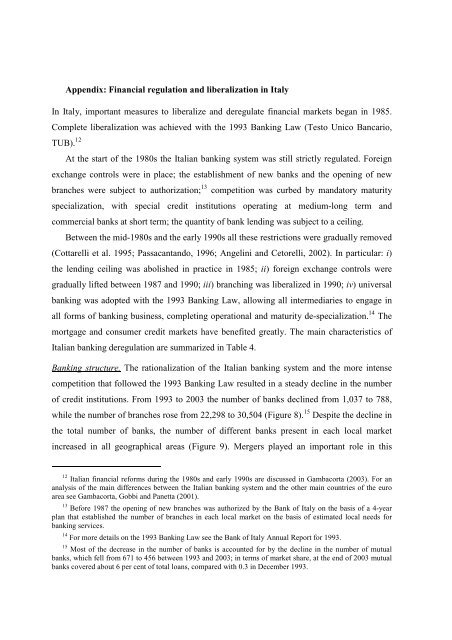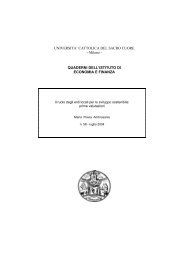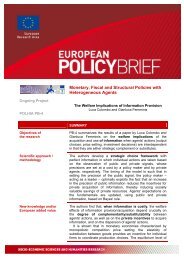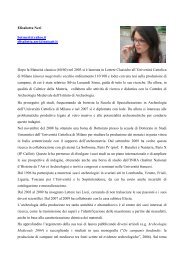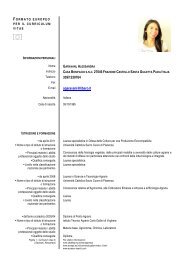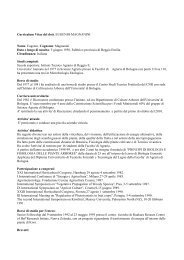REGULATION, FORMAL AND INFORMAL ... - ResearchGate
REGULATION, FORMAL AND INFORMAL ... - ResearchGate
REGULATION, FORMAL AND INFORMAL ... - ResearchGate
You also want an ePaper? Increase the reach of your titles
YUMPU automatically turns print PDFs into web optimized ePapers that Google loves.
Appendix: Financial regulation and liberalization in Italy<br />
In Italy, important measures to liberalize and deregulate financial markets began in 1985.<br />
Complete liberalization was achieved with the 1993 Banking Law (Testo Unico Bancario,<br />
TUB). 12<br />
At the start of the 1980s the Italian banking system was still strictly regulated. Foreign<br />
exchange controls were in place; the establishment of new banks and the opening of new<br />
branches were subject to authorization; 13 competition was curbed by mandatory maturity<br />
specialization, with special credit institutions operating at medium-long term and<br />
commercial banks at short term; the quantity of bank lending was subject to a ceiling.<br />
Between the mid-1980s and the early 1990s all these restrictions were gradually removed<br />
(Cottarelli et al. 1995; Passacantando, 1996; Angelini and Cetorelli, 2002). In particular: i)<br />
the lending ceiling was abolished in practice in 1985; ii) foreign exchange controls were<br />
gradually lifted between 1987 and 1990; iii) branching was liberalized in 1990; iv) universal<br />
banking was adopted with the 1993 Banking Law, allowing all intermediaries to engage in<br />
all forms of banking business, completing operational and maturity de-specialization. 14 The<br />
mortgage and consumer credit markets have benefited greatly. The main characteristics of<br />
Italian banking deregulation are summarized in Table 4.<br />
Banking structure. The rationalization of the Italian banking system and the more intense<br />
competition that followed the 1993 Banking Law resulted in a steady decline in the number<br />
of credit institutions. From 1993 to 2003 the number of banks declined from 1,037 to 788,<br />
while the number of branches rose from 22,298 to 30,504 (Figure 8). 15 Despite the decline in<br />
the total number of banks, the number of different banks present in each local market<br />
increased in all geographical areas (Figure 9). Mergers played an important role in this<br />
12<br />
Italian financial reforms during the 1980s and early 1990s are discussed in Gambacorta (2003). For an<br />
analysis of the main differences between the Italian banking system and the other main countries of the euro<br />
area see Gambacorta, Gobbi and Panetta (2001).<br />
13<br />
Before 1987 the opening of new branches was authorized by the Bank of Italy on the basis of a 4-year<br />
plan that established the number of branches in each local market on the basis of estimated local needs for<br />
banking services.<br />
14<br />
For more details on the 1993 Banking Law see the Bank of Italy Annual Report for 1993.<br />
15<br />
Most of the decrease in the number of banks is accounted for by the decline in the number of mutual<br />
banks, which fell from 671 to 456 between 1993 and 2003; in terms of market share, at the end of 2003 mutual<br />
banks covered about 6 per cent of total loans, compared with 0.3 in December 1993.


